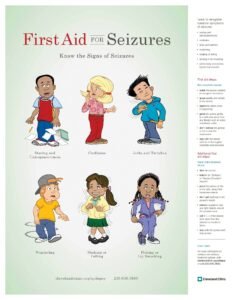
18 Jan Epilepsy management in School
Educating the school nurse, teachers, staff, and students about epilepsy and its treatment, seizure first aid, and possible stigma associated with epilepsy.
• Following the seizure action plan and administering first aid (including the use of rescue medications).
• Understanding the importance of medication adherence and supporting students who take daily medications.
• Helping students avoid seizure triggers, such as flashing lights, or other triggers identified in the seizure action plan.
• Monitoring and addressing any related medical conditions, including mental health concerns such as depression.
• Providing ca se management services for students whose medical condition disrupts their school attendance or academic performance.
DO’S
• Stay with the person until the seizure ends and he or she is fully awake. After it ends, help the person sit in a safe place. Once they are alert and able to communicate, tell them what happened in very simple terms.
• Comfort the person and speak calmly.
• Check to see if the person is wearing a medical bracelet or other emergency information.
• Keep yourself and other people calm.
• Offer to call a taxi or another person to make sure the person gets home safely.
 Knowing what NOT to do is important for keeping a person safe during or after a seizure.
Knowing what NOT to do is important for keeping a person safe during or after a seizure.
Never do any of the following things
- Do not hold the person down or try to stop his or her movements.
- Do not put anything in the person’s mouth. This can injure teeth or the jaw. A person having a seizure cannot swallow his or her tongue.
- Do not try to give mouth-to-mouth breaths (like CPR). People usually start breathing again on their own after a seizure.
- Do not offer the person water or food until he or she is fully alert.



Sorry, the comment form is closed at this time.